How To Use Hashtags Effectively Without Being Annoying
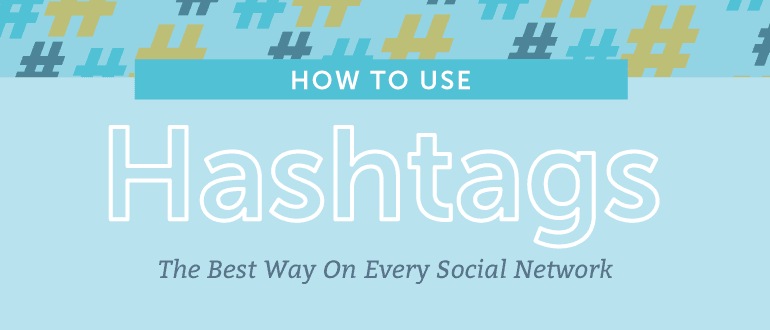 Most everyone knows what hashtags are in 2016.
However, not everyone knows how to use hashtags well. When used properly, hashtags (# signs that help categorize social media content) make it easier for users to find related content. They can help increase the visibility of your messages and boost your social shares. When used inappropriately, however, they can negatively impact your credibility on social media. This can have the inverse effect of decreasing your social activity.
The issue is more complicated when we look at hashtag used beyond Twitter, where they're most popular.
Let's take a moment to clear up some confusion.
Most everyone knows what hashtags are in 2016.
However, not everyone knows how to use hashtags well. When used properly, hashtags (# signs that help categorize social media content) make it easier for users to find related content. They can help increase the visibility of your messages and boost your social shares. When used inappropriately, however, they can negatively impact your credibility on social media. This can have the inverse effect of decreasing your social activity.
The issue is more complicated when we look at hashtag used beyond Twitter, where they're most popular.
Let's take a moment to clear up some confusion.
- Basic hashtag do's and don'ts.
- How to find and select appropriate hashtags for your messages.
- Best practices for each social network.
This Is How To Use Hashtags The Best Way On Every Social Network
Click To Tweet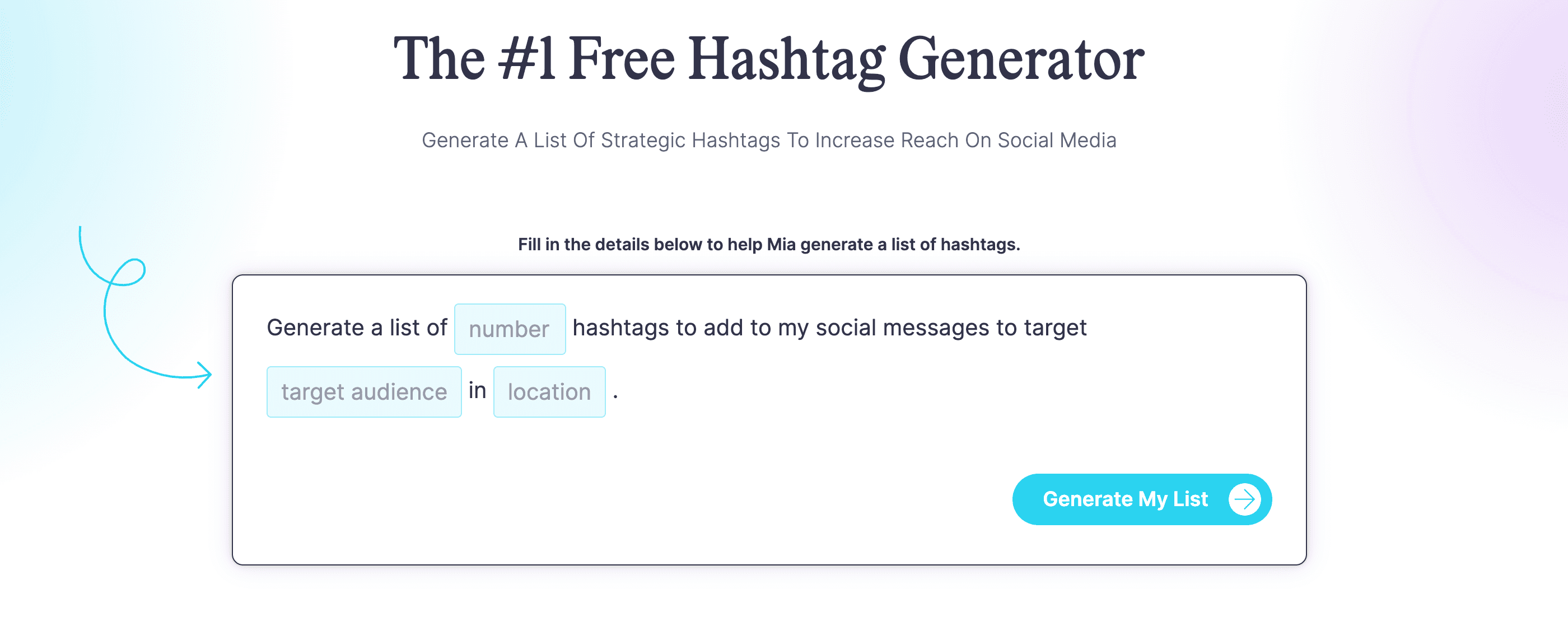 Source
Source
Hashtags Are Just One Small Piece Of Your Social Strategy
Learn when to post, what to post, how to organize and many more crucial social media skills. Save your spot in Actionable Marketing Institute's Social Media Strategy Certification course. Take the initiative to level up your social strategy and be more efficient and effective on social media.What Are Hashtags?
Twitter first introduced hashtags to the social media world in 2007. They've been confusing marketers and media professionals ever since. This video provides a decent historical rundown of hashtag history (if you can bear with it for more than 30 seconds):Do you know how to use hashtags? #socialmedia
Click To TweetHow To Research Hashtags For Your Social Media Messages
Sometimes, the best way to use hashtags is to find ones that already exist. Before you can get started, though, you need to actually find those hashtags. Fortunately, there are a number of tools out there to help with this process. Let's take a look at a handful of useful options: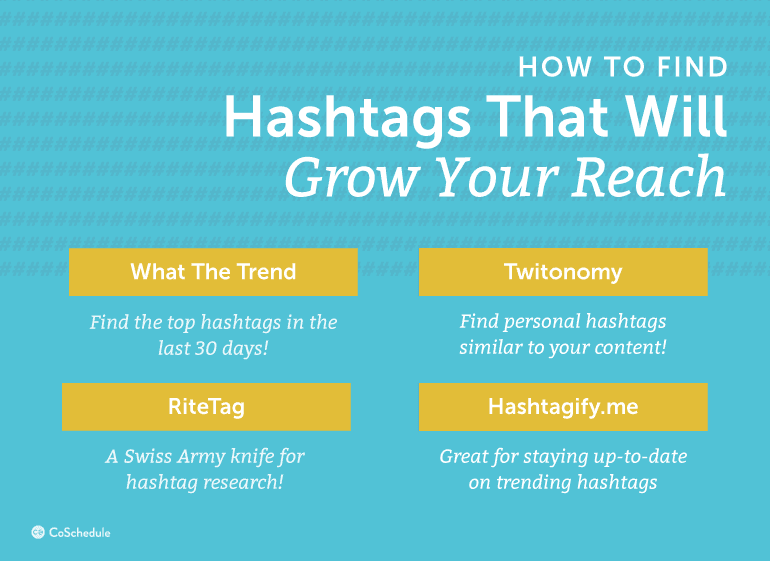
There are many ways to find hashtags. Here are a few ways!
Click To TweetResearch Hashtags Trends On Twitter
Hashtagify.me is a tool that can help you find the best trending hashtags. You can get new viewers by finding creative hashtags that fit your content and are recently trending.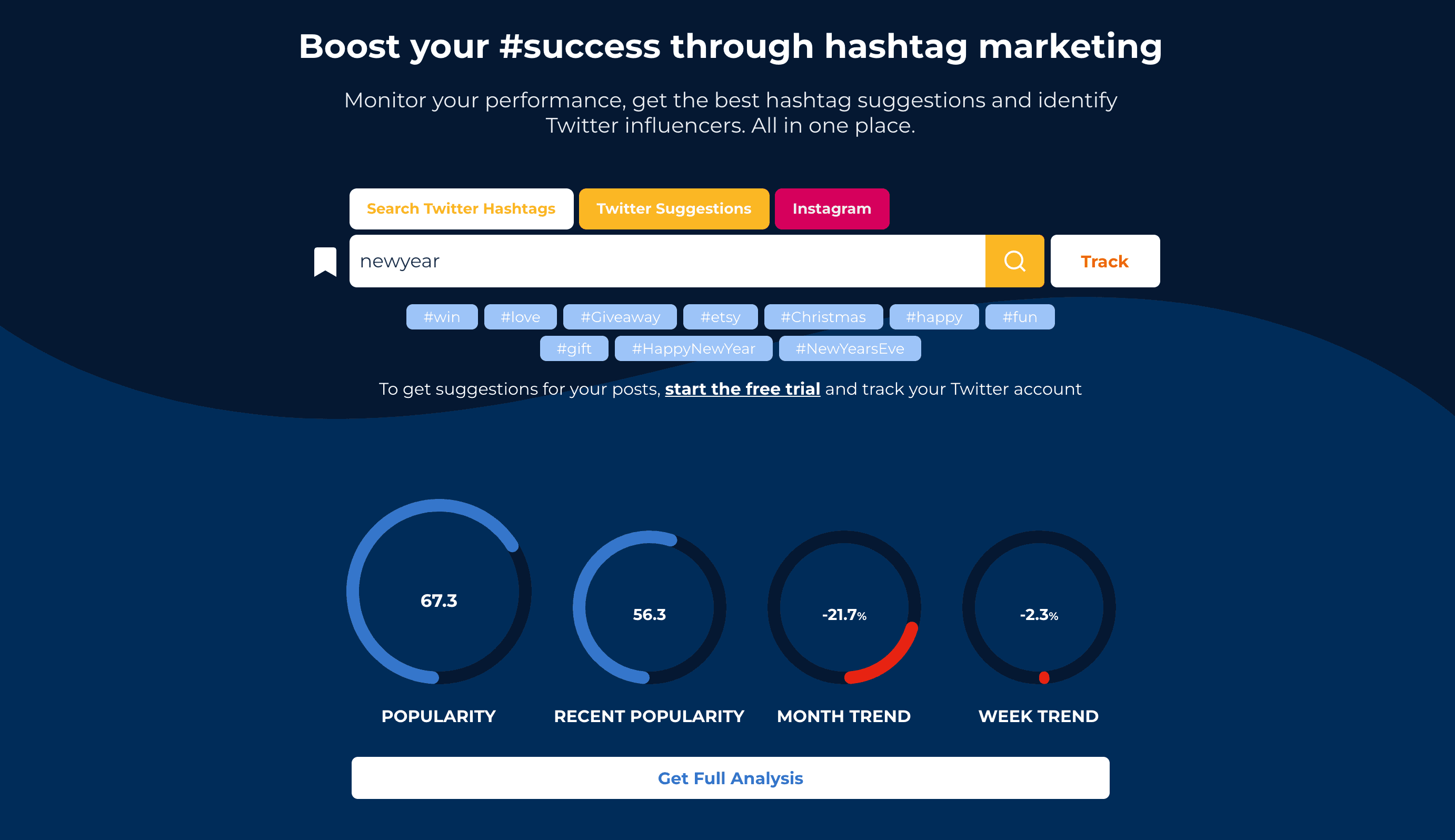
Find Hashtags For Twitter On Twitonomy
Twitonomy can help you find personalized hashtags that revolve around the content you post on your Twitter accounts. It can also show you the most powerful influencers using a given hashtag, as well as who's engaging the most. You'll need a premium to unlock this tool's most useful functionality, but fortunately, it's reasonably priced.
Discover Hashtags For Twitter And Facebook With RiteTag
RiteTag is a hashtag power tool for discovering hashtags. It also offers up-to-date usage data to show you how hashtags are performing in the real world. While the premium plans offer more functionality, the basic free plan still offers plenty of utility. In short, RiteTag is like a Swiss Army knife of deep hashtag research and tracking. This video provides a good run-down of what it can do:You Can Find Twitter Hashtags With Hashtagify.me
Hashtagify.me is another great tool for finding trending hashtags on Twitter. Plus, it also has an option to get email updates on trending hashtags as well. It offers free and premium plans for all sizes of companies, from individual users up to enterprise accounts.
How To Find Hashtags Directly On Each Network
Finding Hashtags On Twitter
There is a list of what is currently popular and a link to all the related tweets on your main feed on the left hand side of your Twitter newsfeed. You can also use the search bar to find hashtags to know what folks are currently using. This is a great way to hone in on hashtags that are super relevant to the content you want to share.
You can also use the search bar to find hashtags to know what folks are currently using. This is a great way to hone in on hashtags that are super relevant to the content you want to share.
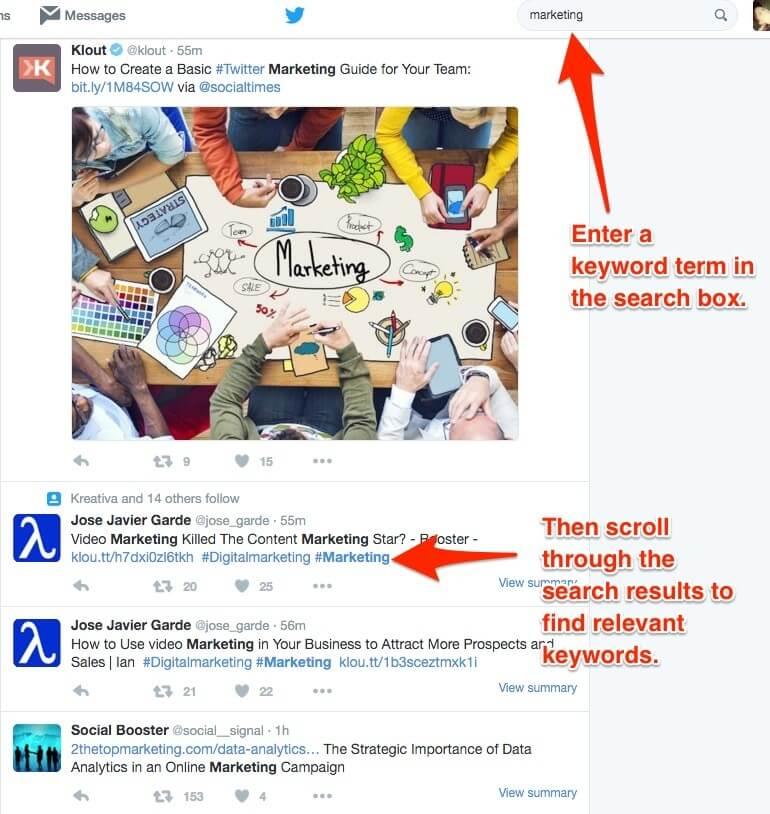
How To Find Hashtags On Instagram:
When you open the Instagram app, you should see a magnifying glass on your home screen: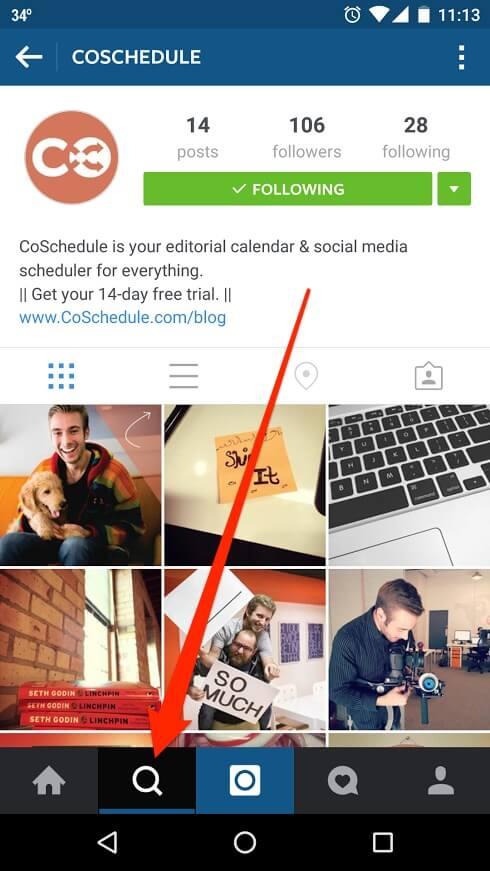 Here, you can browse trending hashtags:
Here, you can browse trending hashtags:

How To Find Hashtags On Facebook:
You can search hashtags in the Facebook search bar:
How To Find Hashtags On Google+:
When you go to insert a hashtag in your post, Google+ proceeds to give you a list of top hashtags related to your post. This can be a useful means of finding more hashtags related to your post topic: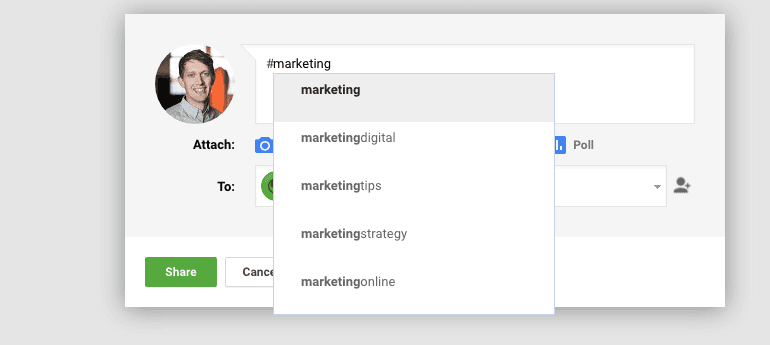
How To Find Hashtags On Pinterest:
Pinterest search supports hashtags as a tagging and discovery engine. When you search a hashtag, pins with similar keywords in the description will show up in the results (along with pins that have the same term in the URL, photo name, or product page tied to the Pin).Use hashtags in Youtube comment sections. #Youtube #hashtags
Click To TweetHow To Use Hashtags On YouTube:
YouTube uses hashtags in comment sections. Try searching for videos related to the topic of your video to see which hashtags appear popular. Clicking on hashtags on YouTube used to bring you to a Google+ page with more related posts. However, they now bring you to a page within YouTube:
Clicking on hashtags on YouTube used to bring you to a Google+ page with more related posts. However, they now bring you to a page within YouTube:
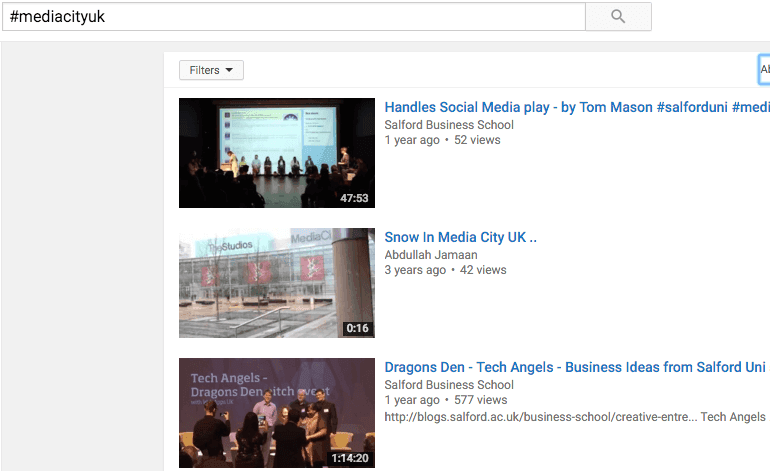
How To Use Hashtags On Every Social Network
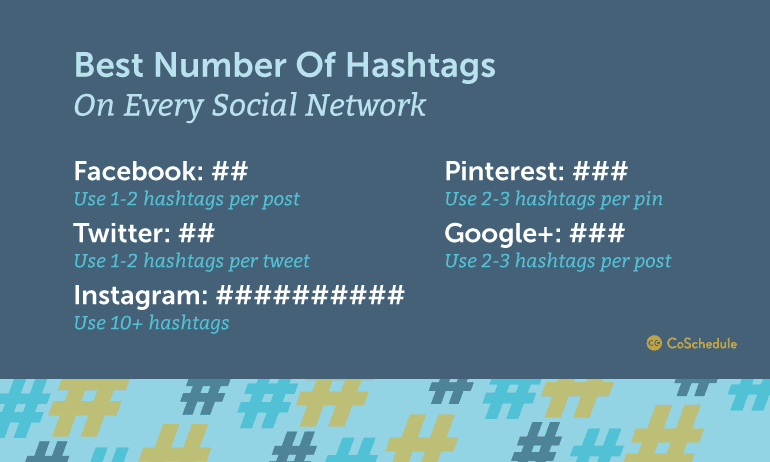 How To Use Hashtags On Facebook
How To Use Hashtags On Facebook
A better question might be, "Should I use hashtags on Facebook at all?"
Data shows hashtags on Facebook do not help boost engagement. That means you might be better served by leaving hashtags off entirely. In one study, posts with hashtags received only .80% viral reach, while posts without hashtags had 1.30% viral reach.
Data shows that using hashtags on Facebook doesn't help boost engagement.
Click To TweetHow To Use Hashtags On Twitter
Stick to one or two hashtags per post since that tends to grow engagement on your content by 21%. When you start using 3 or more hashtags per message, you lower engagement by almost 17%.How To Use Hashtags On Instagram
Photos with 11+ hashtags seem to get the most interactions. However, they can also look like spam when they're overdone. Master the hashtag like photographer Matthew Hodgeman. While he uses hashtags heavily, he keeps them relevant: Matthew tagged the area he was in, along with the topics that his audience would be interested in. That targeting got almost 20 more likes than the rest of his photos from that week.
Matthew tagged the area he was in, along with the topics that his audience would be interested in. That targeting got almost 20 more likes than the rest of his photos from that week.
How To Use Hashtags On Pinterest
Pinterest hashtags lead to search results for the keyword in your hashtags. That means if you have a hashtag in your Pin description, your Pinners can click through to find similar content for those keywords, not necessarily only for that hashtag. There's also no guarantee Pinterest will index the hashtags you choose to use.
If you do decide to use hashtags on Pinterest, then less is more. There is evidence that Pinterest will even demote the value of your Pins that have too many hashtags. Furthermore, some say the best way to use hashtags on Pinterest is to use your own customized hashtags that people click to see your own related Pins instead of directing traffic to see a broader category around a topic.
There's also no guarantee Pinterest will index the hashtags you choose to use.
If you do decide to use hashtags on Pinterest, then less is more. There is evidence that Pinterest will even demote the value of your Pins that have too many hashtags. Furthermore, some say the best way to use hashtags on Pinterest is to use your own customized hashtags that people click to see your own related Pins instead of directing traffic to see a broader category around a topic.
How To Use Hashtags On Google+
Google+ hashtags are automatically assigned to your posts. However, you can edit them, or add your own. Google+ lets you include them in your comments as well. This gives your posts more opportunity to be seen. Usually, a total 2 or 3 hashtags is a good target here.Aim to use 2 or 3 hashtags. That's a good target!
Click To TweetHow To Use Hashtags On YouTube
According to SproutSocial, hashtags on YouTube are most widely used in the comment section. You can use hashtags to categorize your content to be found by topic, using your keywords as the foundation for your hashtags.How To Create Your Own Hashtag
There are times when you might want to create your own hashtag. You might want one to complement an event so attendees can track social posts. Or, you might have a unique marketing campaign that needs its own hashtag (rather than jumping on one that already exists).Can't find a good hashtag for your content? Create your own hashtag!
Click To Tweet
- Memorable.
- Unique.
- Relevant to the content you're sharing.
- Make it unique but simple to remember.
- Don’t make your hashtag so broad that it's hard to track.
Hashtags should be 1. memorable 2. unique and 3. relevant
Click To TweetFollow These Hashtag Best Practices
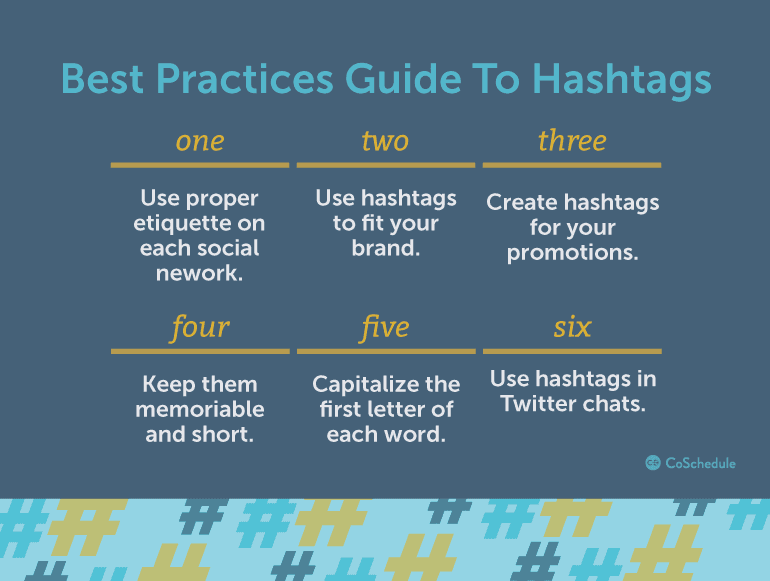
1. Be Mindful of Proper Hashtag Etiquette on Each Specific Network
Instagram hashtags are often more geared toward topics or descriptions. However, Twitter hashtags tend to be more focused on a topic or conversation. Get familiar with how your specific audience uses hashtags on their networks. Then, participate in the conversation accordingly.2. Use Hashtags That Fit Your Brand
It's tempting to jump on every hot trending hashtag out there. However, it's better to stick to using hashtags that fit your brand. Use some common sense and ask yourself if a hashtag actually fits your image, message, content, and audience. For example, if your brand primarily serves customers over 40, then using a hashtag heavy on youth slang will probably look awkward.Stick to the hashtags that fit your brand. #blogging #marketing
Click To Tweet3. Create Hashtags For Promotions
Running a promotion? What better way than to spread the word through hashtags. Here's one example for National Walking Day:
4. Keep Them Short And Memorable
Twitter only allows you 140 characters, so if your hashtag takes up too much room, people won't want to use it because it will take away from their content and links. By overcrowding your tweet, you're going to lose attention, not grab it.Don't overcrowd your Tweet. You will lose attention.
Click To Tweet5. Capitalize The First Letter Of Each Word
#whenyouputmanywordstogether in a single hashtag, the letters can become all jumbled up and difficult to skim through. #ButIfYouCapitalize the first letter of each word, it's easier to distinguish each word and read at a glance. Hashtags are not case sensitive, so when you combine multiple words together in your hashtag, distinguish them by capitalizing the first letter of each word.6. Use Hashtags In Twitter Chats
Twitter chats are online events centering an entire conversation around a hashtag. They're a great way to build relationships with your audience, and encourage engagement with a branded hashtag.Avoid These Common Hashtag Mistakes
Some of these tips are basic. Some you may never have heard of. But one thing is clear: If you make these mistakes, you'll miss out on the engagement you were hoping to get from your social messages.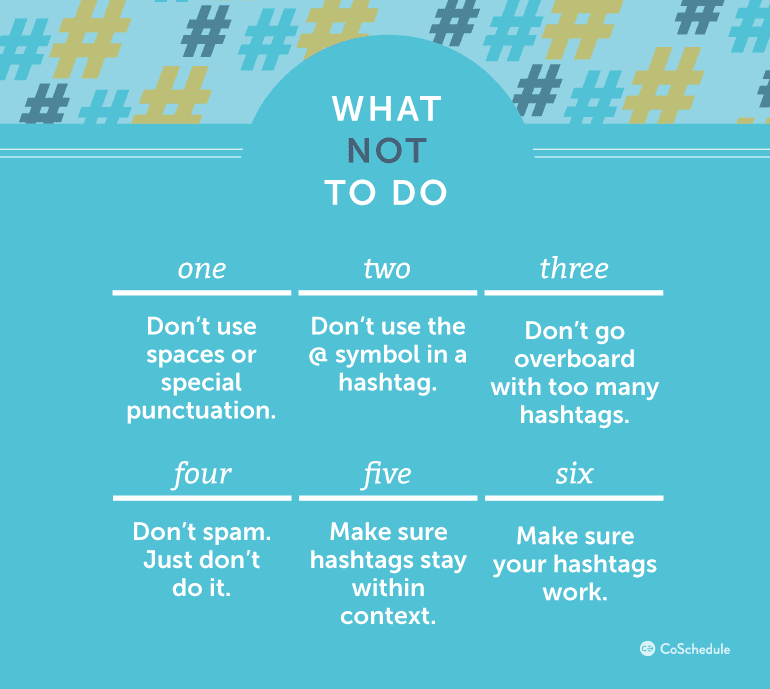
1. Don't Use Spaces Or Special Punctuation
Use #SuperBowl not #super bowl. Your social networks will only recognize the first word. Don't use punctuation marks, but you can use numbers as long as you complement them with a bit of text (like that #smmw16, for example).2. Don’t Use The @ Symbol In Hashtags
Your hashtags aren't designed to tag your network's users. So combining both a hashtag and an "at" symbol will only tag the person/user, and you won't send a hashtag at all.3. Don't Go Overboard With Too Many Hashtags
#How #Annoying #Would #It #Be #To #Have #To #Go #Through #And #Read #Thirty #Hashtags #And #Try #To #Find #Out #What #It #Is #Saying.No one likes #hashtag #spam.
Click To Tweet4. Don't Spam
There are websites, brands, and individuals that use popular hashtags and just throw them in their social messages with no context, just for the sole purpose of helping other accounts to find them. This plan may seem to work in the short term, but just when Instagram did a complete clean out of any account that seemed to be linked with spam, these individuals lost hundreds of thousands of followers. Their hashtag plan completely backfired.5. Make Sure Hashtags Mean What You Think They Do
Pizza brand DiGiorno Pizza made a huge mistake when they jumped on the viral hashtag #WhyIStayed. DiGiorno didn't look up the context of the hashtag. #WhyIStayed pertained to people who were sharing their domestic violence stories to raise awareness after Ray Rice punched his then-financeè Janay Palmer. DiGiorno tweeted “#whyIstayed You had pizza”. Within a minute, the tweet had been deleted, but the damage had already been done.6. Make Sure Your Hashtags Work
If there is a symbol or punctuation in or after the hashtag, you will break the hashtag. Grammar police beware. If you want to post #I'mback, your hashtag will break after the I. You can tell where your hashtag broke when the blue line turns into black text. Take a look at "#it's" in this example of a Tweet scheduled with CoSchedule. The preview here shows that the apostrophe is breaking your hashtag.
If there are letters or numbers before the hashtag, it will break it before it even starts. So if your hashtag is 123#abc, abc won't link to a hashtag.
If the hashtag is made up entirely of numbers, the hashtag will not hyperlink. But if you include letters with your numbers, the hashtag will work correctly. So #12345 won't work. but #123abc will.
Take a look at "#it's" in this example of a Tweet scheduled with CoSchedule. The preview here shows that the apostrophe is breaking your hashtag.
If there are letters or numbers before the hashtag, it will break it before it even starts. So if your hashtag is 123#abc, abc won't link to a hashtag.
If the hashtag is made up entirely of numbers, the hashtag will not hyperlink. But if you include letters with your numbers, the hashtag will work correctly. So #12345 won't work. but #123abc will.
Real-Life Examples Of How To Use Hashtags The Right Way
Let's take a look at some super successful hashtag strategies to inspire your own.Jimmy Fallon: King Of The Hashtag For Social Media Engagement
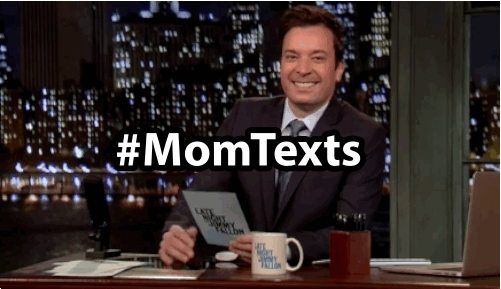 https://twitter.com/StefenColalillo/status/385495505054101504
https://twitter.com/StefenColalillo/status/385495505054101504
 https://twitter.com/fancypantsLATX/status/410542585459904512
https://twitter.com/fancypantsLATX/status/410542585459904512
 https://twitter.com/kyle_molin/status/421033844327059456
https://twitter.com/kyle_molin/status/421033844327059456
#LikeAGirl
84% of people will share content because it makes them feel like they're supporting a cause. This principle is what helped the #LikeAGirl campaign go viral. When Always created the campaign that asked girls and boys to do things "like a girl", teens tended not take the message seriously. However, younger kids really took it to heart. The aim was to show that as kids get older you get, the world instills in them negative perceptions about how girls should act. The campaign was an overwhelming success. Since debuting in June 2014, this video has had more than 80 million views worldwide, which was helped in part by the #LikeAGirl hashtag that complemented the campaign:#EsuranceSave30
Here's another great example from Esurance. Last year, they saved $1.5 million by buying air time for their commercial right after the Super Bowl was over. They promised to give away that cash to one person who included #EsuranceSave30 in a tweet. 2.39 million users tweeted with the hashtag, elevating awareness of the Esurance brand (for a lot less than the cost of traditional advertising): https://youtu.be/fQ6brprBSGkAnd That's How To Use Hashtags To Increase Your Brand Awareness
Hashtags can make or break your social media messages and engagement. It's super important that you understand where, when, and how to use them. Now you have a bunch of tips to get you started in the right direction!Ready To Take Your Social Strategy To The Next Level?
Now that you know how to use hashtags strategically, take the next step on your social media marketing journey. Get Social Media Strategy Certified with Actionable Marketing Institute! When you enroll, you will unlock premium videos, templates, and downloads to help you build the perfect marketing strategy.
How To Use #Hashtags To Increase Your Engagement And Followers #smm
Click To Tweet


